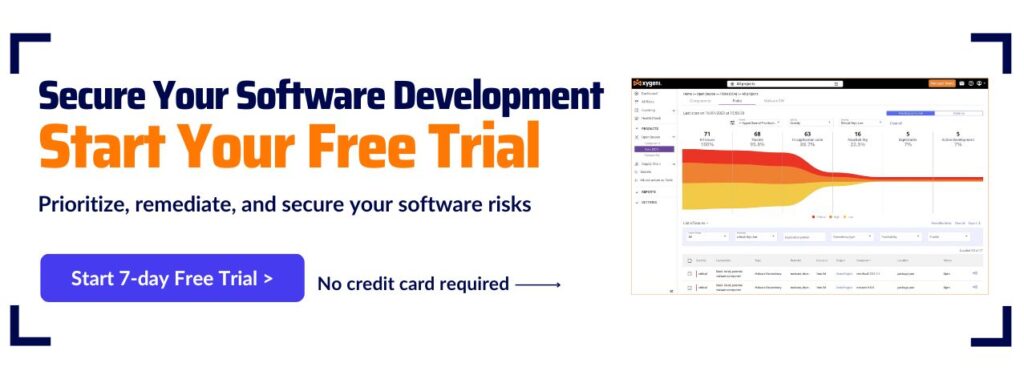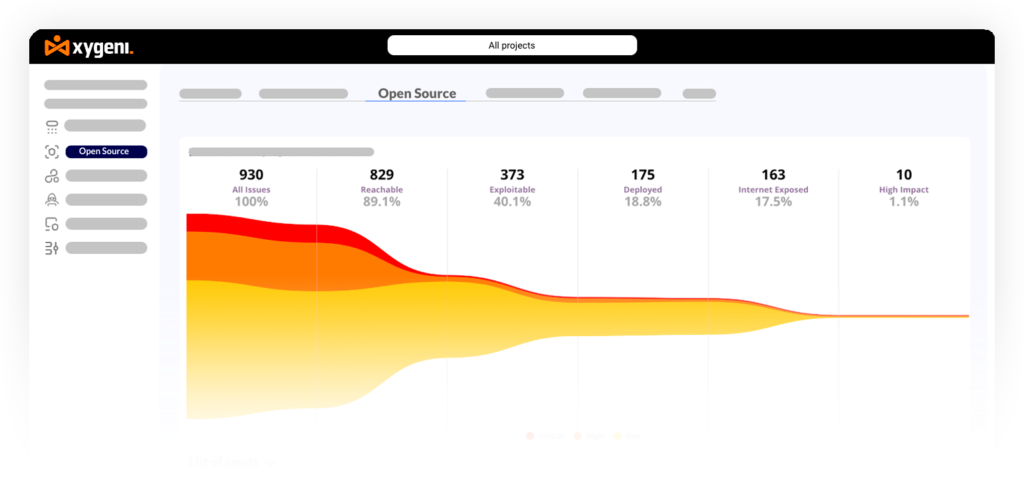Application Security Posture Management Platforms (ASPM Platforms from now on) are today fundamental. As companies build, deploy, and scale software at unprecedented speed, the risk of vulnerabilities slipping through the cracks increases day by day. As you may already know, ASPM platforms offer a centralized and intelligent way to continuously monitor, assess, and improve the security posture of applications across the entire SDLC (from coding and testing to deployment and runtime).
Unlike isolated security tools, ASPM platforms unify insights from multiple sources, among which you can find code scanning, cloud infrastructure, CI/CD pipelines, and runtime environments, to provide complete visibility into an application’s risk profile. By integrating smoothly with existing DevSecOps workflows, an ASPM platform can help your team detect and prioritize real threats, reduce alert fatigue, and ensure security isn’t left behind in the race to deliver software faster.
In short, ASPM platforms empower organizations to take a proactive, context-aware approach to application security, making them a vital piece in the evolving software supply chain security landscape. Let’s begin!
Understanding Application Security Posture Management Platforms
What Are ASPM Platforms?
Application Security Posture Management (ASPM) platforms are essential for modern cybersecurity. They secure applications from development through deployment. Unlike traditional security measures, ASPM ensures robust security from development to runtime.
Key Features of an Effective ASPM Platforms
Unified Security Monitoring
Discover how ASPM platforms offer continuous security monitoring, management, and enhancement of application security.
- Centralized Management: Integrates various security tools into a single platform. Provides a unified security posture view.
- Comprehensive Scanning: Includes SAST, SCA, and secret scanners.
- Prioritization and Contextualization: Prioritizes vulnerabilities based on contextual data, such as reachability and runtime analysis.
- Automation and Efficiency: Supports automated remediation processes. Reduces manual efforts in vulnerability management.
- Flexibility and Scalability: Integrates third-party tools. Scales to cover new applications and repositories.
Importance of ASPM Platforms in Cybersecurity
ASPM has gained prominence due to the convergence of several factors:
Cloud Architectures and DevOps Methodologies
The adoption of cloud architectures and DevOps methodologies has transformed how organizations develop and deploy applications. These methodologies include Continuous Integration and Continuous Deployment (CI/CD) pipelines. They promote rapid code deployment and frequent updates. This can introduce new vulnerabilities at an accelerated pace. Traditional security measures often struggle to keep up with this rapid development cycle. ASPM platforms consolidate these diverse scanning needs into a single platform. They provide a unified approach to security. This approach can handle the complexities of modern development ecosystems.
Diverse Scanning Needs
Modern development environments are highly heterogeneous. They use multiple programming languages, frameworks, and tools. This diversity requires a variety of scanning technologies to identify vulnerabilities effectively. Different types of scanners target various components, such as Docker files, Terraform configurations, and other infrastructure-as-code files. ASPM platforms consolidate these diverse scanning needs into a single platform. They provide a unified approach to security that can handle the complexities of modern development ecosystems.
Volume of Open Source Consumption
The widespread adoption of open-source components in application development has significantly increased the need for thorough security scanning and management. Open-source libraries and frameworks offer tremendous benefits in terms of development speed and cost savings. However, they also introduce potential vulnerabilities that can be exploited if not properly managed. ASPM platforms provide robust scanning capabilities. They continuously monitor and assess the security of open-source components within an organization’s codebase. This ensures that vulnerabilities are identified and addressed promptly.
Experts argue that ASPM solutions are critical for turning vast amounts of scan data into actionable insights. This enables both enterprise and mid-market companies to manage their application security effectively.
Challenges and Future of ASPM Platforms
Deploying an Application Security Posture Management platforms presents a unique set of challenges. Organizations must navigate these challenges to ensure effective implementation and operation. These challenges can be broadly categorized into several areas.
Integration with Existing Tools
One of the most significant hurdles in deploying an ASPM solution is integrating it with the myriad of security tools already in use within an organization. Many enterprises have invested heavily in various security tools over the years. Each tool has its specialized function, ranging from Static Application Security Testing (SAST) and Software Composition Analysis (SCA) to Dynamic Application Security Testing (DAST) and secret scanning. These tools are often deeply embedded into the development and operational workflows. This creates a complex web of dependencies and integrations.
James Berthoty noted, “A lot of my experience is on the startup to mid-market approach. I am not going to go and buy eight different scanners to figure out what I need to do. I am really looking at ASPM as the solution. Now that this architecture has settled, just give me the thing I need to scan. Give my developers feedback on how they can improve the security of their code.“
Integrating these disparate tools into a unified ASPM solution requires meticulous planning and execution. It must not disrupt current workflows. The ASPM solution must be flexible enough to accommodate various existing tools. It should provide seamless integration points. This complexity is compounded by differing APIs, data formats, and reporting mechanisms for each tool. Ensuring effective communication within a single ASPM platform requires extensive customization and configuration. This often necessitates collaboration across multiple teams within the organization.
Manual Effort and Resource Limitations
The manual effort required to manage and remediate vulnerabilities is another major challenge in deploying ASPM solutions. Security teams are frequently inundated with alerts from multiple sources, each indicating potential vulnerabilities that need to be addressed. The process of triaging these alerts, prioritizing them based on severity and potential impact, and then coordinating with development teams for remediation is highly resource-intensive.
Jesus Cuadrado highlighted, “The management of the issues and the remediation and everything is a manual process. So actually everything the developers or the engineers receive requires time and manual effort. And it’s an effort that is not productive.” In many organizations, this process is still largely manual, involving significant time and effort. Security teams must sift through vast amounts of data to identify true positives, dismiss false positives, and determine the appropriate remediation actions. This manual approach not only consumes valuable resources but also introduces the risk of human error, leading to potential oversight of critical vulnerabilities.
Furthermore, the manual effort required to manage vulnerabilities can lead to significant delays in remediation. With the increasing pace of software development and deployment, these delays can result in prolonged exposure to security risks. Implementing an ASPM solution aims to automate much of this process, but the transition from manual to automated workflows can be challenging. It requires careful planning, training, and a phased approach to ensure that automation does not inadvertently miss critical issues or disrupt existing processes.
Visibility and Context
Achieving comprehensive visibility into the application environment and contextualizing vulnerabilities across different stages of development and deployment is essential for effective security management. However, this is easier said than done. Applications today are complex, often composed of numerous microservices. Each may be developed in different languages, using different frameworks, and running in different environments.
Monitoring and Securing the Application
Firstly, visibility challenges arise from the need to monitor and secure not just the application code but also the infrastructure it runs on. This includes the libraries and dependencies it uses and the configurations that define its runtime behavior. An ASPM solution must provide a holistic view that encompasses all these elements. It should offer insights into how they interconnect and where vulnerabilities might arise.
Contextualizing Vulnerabilities
Furthermore, William Palm noted, “Each one of them has a different onboarding process as well. So when you’ve got 18 different scanners, for example, and each one of them is scanning a different library or scanning a different technology, each one of them is going to be involved in different development groups. Each one of them is going to be across your product stack in different ways.” Contextualizing vulnerabilities means understanding the broader impact of a potential security issue. For instance, a vulnerability in a piece of code might be critical if that code handles sensitive data or is exposed to the internet. Conversely, it may be less critical if it is part of an internal-only system with limited access. Providing this context requires integrating data from multiple sources, including code repositories, CI/CD pipelines, runtime environments, and even business impact assessments.
Data Aggregation and Analysis
Achieving this level of visibility and context requires sophisticated data aggregation and analysis capabilities. Consequently, the ASPM solution must be able to correlate information from different stages of the software development lifecycle and present it meaningfully to security and development teams. This involves not only technical challenges but also organizational ones, as it requires close collaboration between teams that may have traditionally operated in silos.
Future Directions for ASPM
The future of Application Security Posture Management (ASPM) is poised for significant advancements. As the field continues to evolve in response to the dynamic cybersecurity landscape, several key trends and developments are expected to shape its future. These trends will enhance ASPM’s capabilities and integration with other security frameworks.
Enhanced AI and Automation
The integration of artificial intelligence (AI) and machine learning (ML) into ASPM platforms will revolutionize how vulnerabilities are detected and remediated. AI can significantly enhance the accuracy and efficiency of security scans. It identifies patterns and anomalies that traditional methods might miss. Machine learning algorithms can continuously learn from new data. This improves the identification of potential threats over time.
James Berthoty remarked, “The auto-patching stuff is super interesting to me. That’s all using large language models. So that will be coming.” Using AI in automating vulnerability detection and remediation processes can drastically reduce the manual workload on security teams. AI-driven tools can automatically generate and apply patches for known vulnerabilities. They can at least provide developers with suggested fixes. This speeds up the remediation process and minimizes the window of exposure.
Improved Developer Support
As ASPM solutions evolve, they will focus more on providing developers with contextual information and remediation guidance directly within their development environments. This integration aims to make security a seamless part of the development process. It enables developers to identify and address vulnerabilities early in the software development lifecycle (SDLC).
William Palm emphasized the importance of this approach, stating, “The ASPM solution should include almost all of those scanners. What’s extremely important is a centralized point for integrations, for getting the right vulnerability out to the right person.” Future ASPM solutions will likely offer enhanced integration with popular Integrated Development Environments (IDEs) and CI/CD pipelines. They will provide real-time feedback and actionable insights to developers. This will help foster a security-first mindset among developers. It ensures that security considerations are integrated from the outset.
Advanced API Security
APIs are increasingly becoming the backbone of modern applications. This makes API security a critical component of application security. Future ASPM solutions will expand their capabilities to include comprehensive API security features. This will involve not only detecting vulnerabilities in APIs but also ensuring that APIs are properly configured and securely deployed.
With the growing importance of APIs, ASPM tools will need to integrate API discovery, monitoring, and protection into their core functionalities. This includes the ability to automatically discover and catalog APIs within an organization. They will monitor API traffic for unusual patterns and apply security policies to protect against API-specific threats. These threats include injection attacks, improper authentication, and data leaks.
Integration with Cloud Security Posture Management (CSPM)
The lines between application security and cloud security are becoming increasingly blurred. This necessitates a more integrated approach. Future ASPM platforms will offer greater integration with Cloud Security Posture Management (CSPM) tools. This reflects the need for a unified security strategy that encompasses both application and infrastructure security.
James Berthoty highlighted this trend, saying, “I don’t think CSPM should exist as a category because you’re scanning assets at runtime for vulnerabilities that are defined entirely before runtime.” ASPM solutions will likely incorporate features traditionally associated with CSPM. These features include continuous monitoring of cloud environments, detection of misconfigurations, and enforcement of security policies. This convergence will provide organizations with a holistic view of their security posture. It covers the application layer to the cloud infrastructure.
Comprehensive Vulnerability Management
Future ASPM platforms will strive to provide comprehensive vulnerability management. They will integrate data from various sources. This will offer a unified view of an organization’s security posture. This involves not only aggregating scan results from different tools but also correlating them with runtime data. This provides context-aware insights.
Jesus Cuadrado pointed out the need for such integration, stating, “You have to mix a lot of different things and it’s quite complex. So before even having the visibility or to create the context, we need the visibility to discover everything and to discover all the relationships among all the different assets and the way they interact, where and the place and everything else.” This approach will enable organizations to prioritize vulnerabilities more effectively. They can focus on those that pose the greatest risk to their operations. By combining static analysis, dynamic analysis, and runtime protection data, ASPM platforms can offer a more accurate and actionable picture of the security landscape.
Conclusion
Significant advancements in AI and automation, improved developer support, enhanced API security, and closer integration with cloud security frameworks will characterize the future of ASPM. These developments will collectively enhance ASPM platforms’ capabilities. They will become more effective in identifying and remediating vulnerabilities, providing contextual insights, and ensuring comprehensive security across the entire application lifecycle.
As the field continues to evolve, organizations must stay abreast of these trends and invest in ASPM platforms that are adaptable and forward-thinking. By doing so, they can maintain a robust security posture in an increasingly complex and interconnected digital landscape.
This report compiles insights from a recent SafeDev Talk episode, “Do You Need ASPM in Your Life?”, featuring industry experts James Berthoty, William Palm, and Jesus Cuadrado. They discussed the significance, challenges, and future of ASPM platforms, emphasizing their role in strengthening application security posture in today’s dynamic cyber landscape.








